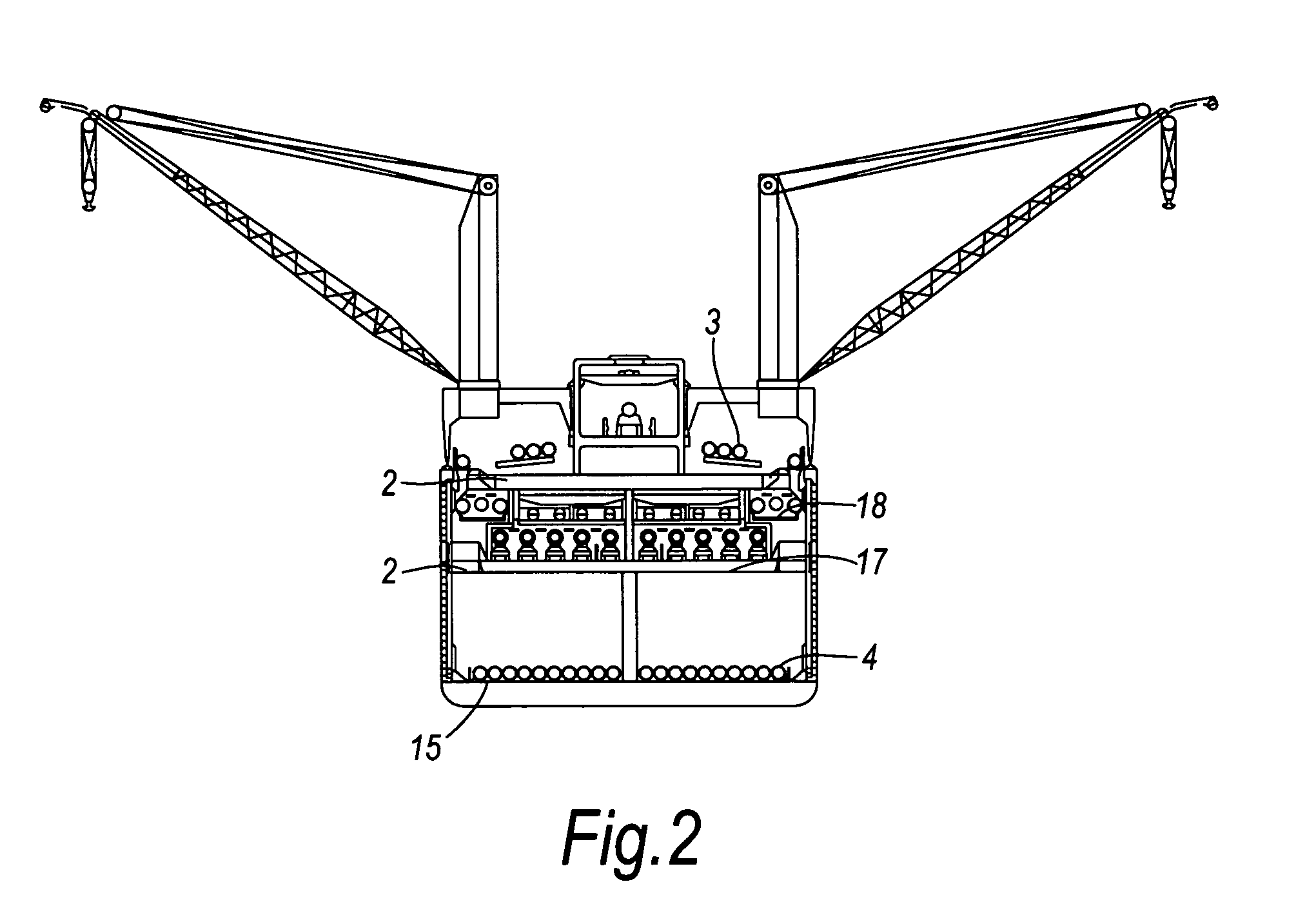Undersea pipe-laying
a technology for pipelines and undersea pipes, which is applied in the direction of pipe laying vessels, cable laying vessels, pipe laying and repair, etc. it can solve the problems of difficult to provide welding stations on the tower, large support length, and unsatisfactory solutions, and achieve good protection of pipelines and enhance the accessibility of pipelines.
- Summary
- Abstract
- Description
- Claims
- Application Information
AI Technical Summary
Benefits of technology
Problems solved by technology
Method used
Image
Examples
Embodiment Construction
[0040]The vessel shown in FIGS. 1 to 3 generally comprises a vessel hull 1, within which are defined a plurality of prefabricated decks 2 for the prefabrication of jointed pipe sections 3 from individual lengths of pipe 4 and on which cranes and other facilities are provided. The bow 5 of the hull 1 is shown on the right hand side and the stern 6 of the hull 1 is shown on the left hand side, as viewed in FIG. 1.
[0041]As can be seen from FIGS. 1 and 3, the vessel hull 1 is of unconventional design at its stern end, having starboard and port end portions 7S and 7P between which an elongate recess 8 is defined. The recess 8 is open at the stern end of the hull 1 and is also open downwardly (into the sea), but it may be closed over the top by a deck. As shown in FIG. 1, but omitted in FIG. 3, an internal ramp 9 is pivotally connected to the hull of the vessel and is disposed in the protected stern area defined by the recess 8.
[0042]The barycentre B (centre of gravity) of the vessel is m...
PUM
 Login to View More
Login to View More Abstract
Description
Claims
Application Information
 Login to View More
Login to View More - R&D
- Intellectual Property
- Life Sciences
- Materials
- Tech Scout
- Unparalleled Data Quality
- Higher Quality Content
- 60% Fewer Hallucinations
Browse by: Latest US Patents, China's latest patents, Technical Efficacy Thesaurus, Application Domain, Technology Topic, Popular Technical Reports.
© 2025 PatSnap. All rights reserved.Legal|Privacy policy|Modern Slavery Act Transparency Statement|Sitemap|About US| Contact US: help@patsnap.com



